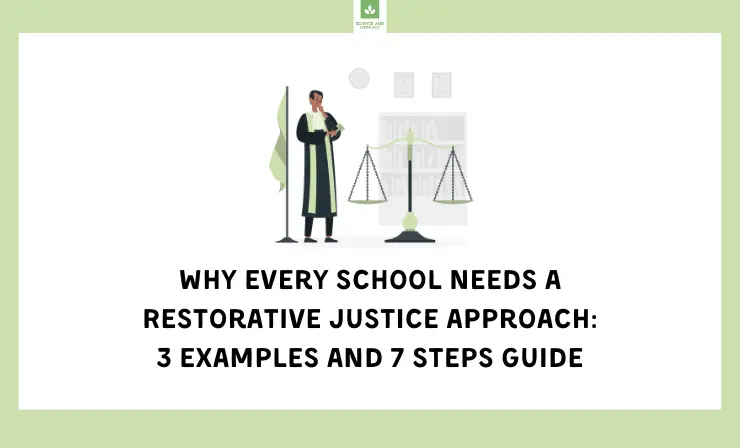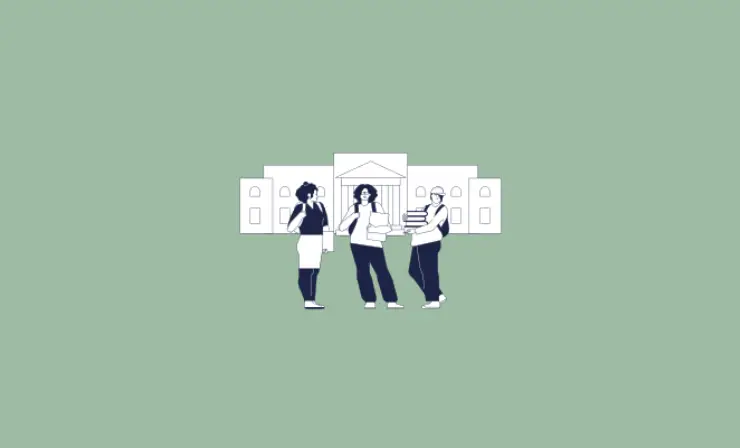The concept of restorative justice in schools is a multifaceted process that centers on amending harm and rejuvenating interpersonal connections within scholastic settings. Its aim is to cultivate a secure and all-encompassing milieu that fosters a conducive atmosphere for students to learn, progress, and flourish. The efficacy of this approach in tackling conflicts, curbing suspensions, and encouraging socio-emotional learning is well-established. It instills within students a sense of ownership and accountability for their actions and enlightens them on the importance of effective communication, attentive listening, and empathic understanding towards their peers.

This guide is geared towards educators and endeavors to furnish them with 10 indispensable tips for seamlessly integrating restorative justice into their educational institutions. We will delve into the restorative justice definition in schools and explicate the manifold advantages of employing this approach. Furthermore, we will provide illuminating instances of restorative justice practices that have been effectively implemented in schools. In addition, we will meticulously examine the fundamental principles that underlie restorative justice and the measures required to inculcate a restorative justice culture. A comprehensive elucidation of the art of conducting restorative circles will also be provided. Moreover, we will delve into the critical significance of cultivating robust relationships with students and the role of teachers in redressing power imbalances. Finally, we will proffer strategies for providing requisite support to students who have been victims of harm.
Employing these invaluable tips can equip educators with the means to facilitate the acquisition of skills by students necessary for conflict resolution and cultivating wholesome relationships. The practice of restorative justice in schools holds the potential to foster a favorable and secure learning atmosphere that caters to the needs of all students, engender a palpable sense of unity and inclusivity, and augment academic outcomes. As custodians of the educational process, teachers wield a profound influence on the lives of their students, and the practice of restorative justice is an efficacious instrument that can enable them to realize this objective.
After reading this article, you’ll get to know about:
- What is restorative justice in schools? →
- What are the 3 Basic Restorative Justice Practices in Schools? →
- What are 3 Restorative Justice in Schools Examples? →
- 3 Pros & 3 Cons of Restorative Justice in Schools →
- How Can Schools Implement Restorative Justice in 7 Steps? →
- Useful Recourses →
- Conclusion →
What Is Restorative Justice in Schools?
Restorative justice in schools is an invaluable disciplinary approach that centers on repairing the harm that ensues from an offense, rather than focusing solely on punishing the offender. In essence, it represents a paradigm shift in the way conflicts and misbehavior are addressed within educational institutions. Restorative justice in schools operates on the premise of creating a secure and all-encompassing milieu, one where students feel accepted, appreciated, and empowered. It seeks to foster a culture of inclusivity, where every student feels seen, heard, and valued.

This approach promotes a sense of community and belonging among students and augments academic outcomes. In addition, it instills within students a sense of ownership and accountability for their actions, and teaches them essential life skills such as effective communication, active listening, and empathic understanding.
How Restorative Justice Differs from Traditional Disciplinary Approaches
Restorative justice stands in stark contrast to traditional disciplinary approaches in several crucial ways. Unlike traditional approaches, which typically rely on punishment and exertion of control with little attention paid to the underlying causes of the behavior, restorative justice seeks to delve deeper into the root causes of the behavior and to address the harm that has been caused. The ultimate goal of this approach is to rebuild relationships and cultivate a sense of community, rather than focusing solely on punishing the offender.
By prioritizing the values of empathy, respect, and understanding, restorative justice strives to create a safe and supportive environment for all students. It seeks to empower students by providing them with the tools necessary to navigate conflict resolution and promote a culture of inclusivity. In contrast to the punitive approach of traditional disciplinary measures, restorative justice fosters an environment conducive to the development of strong and healthy relationships, which, in turn, can reduce the occurrence of disciplinary issues over time.
Why Restorative Justice Should Be a Viable Choice for Modern Teachers
The benefits of restorative justice extend to both students and teachers alike. By implementing this approach, educators can address conflicts and misbehavior in a constructive and positive manner, resulting in stronger relationships with their students and a more supportive classroom environment. This, in turn, can lead to a reduction in disciplinary issues and an improvement in student outcomes.
Moreover, restorative justice is aligned with modern educational values such as inclusivity, social justice, and empathy. This approach empowers students to take responsibility for their actions and to learn from their mistakes, while also fostering a sense of community and belonging within the school community.
Restorative justice offers an effective and compassionate alternative to traditional disciplinary approaches, with the potential to positively impact school culture and student well-being. By prioritizing relationship-building and harm repair, teachers can create an environment that is safe and supportive, allowing students to thrive academically, socially, and emotionally. In this way, restorative justice is an approach that can bring about lasting positive change in schools.
What are the 3 Basic Restorative Justice Practices in Schools?
Restorative justice practices in schools are focused on fostering and maintaining positive relationships between students and teachers, as well as among students themselves. These practices aim to build a sense of community within the school and encourage collaborative problem-solving to address conflicts and harm that may arise.

Restorative justice practices can take many forms, including restorative circles, mediation, conferencing, and peer-to-peer conversations. These practices involve active listening, respectful communication, and a focus on repairing harm and restoring relationships. Through these practices, students can develop a range of social and emotional skills, such as empathy, communication, and conflict resolution.
1. Community Building Circles
During community building circles, participants sit in a circle and take turns sharing their experiences and perspectives on a specific topic. This can be a simple icebreaker question, such as “What is your favorite hobby?” or a more complex topic related to the curriculum or current events. The conversation is guided by a facilitator, who ensures that everyone has an opportunity to speak and that the discussion remains respectful and inclusive.
Community building circles can be used at the beginning of the school year to help students and teachers get to know each other, or they can be used throughout the year to address specific issues or concerns. By creating a sense of community and promoting positive relationships, community building circles can help to prevent conflict and support academic success.
2. Restorative Conferences
Restorative conferences provide an opportunity for all parties involved to share their experiences and perspectives in a respectful and constructive manner. The facilitator helps to guide the conversation, ensuring that everyone has a chance to be heard and that the conversation stays focused on repairing the harm and finding solutions.
The goal is not to assign blame or punishment, but rather to build understanding and repair relationships. These conferences can be used for a variety of situations, from minor conflicts to more serious incidents, and are a powerful tool for building a restorative culture in schools.
3. Peer Mediation
Peer mediation is an effective way to empower students to take ownership of their conflicts and learn valuable conflict resolution skills. By engaging in peer mediation, students learn to communicate more effectively and develop empathy for others. They also develop a sense of responsibility for their actions and become more confident in their ability to resolve conflicts peacefully.
This practice not only benefits the students involved but also the entire school community, as it helps to create a culture of respect and understanding.
3 Benefits
- Restorative justice practices in schools also promote social-emotional learning, conflict resolution skills, and empathy.
- These practices provide opportunities for students to develop communication and problem-solving skills, which can be applied in other areas of their lives.
- Restorative justice can help to address systemic issues and inequalities in schools by empowering students to take an active role in creating a safe and inclusive learning environment.
Overall, restorative justice practices in schools can have a significant positive impact on the well-being and success of students, teachers, and the school community as a whole.
What are 3 Restorative Justice in Schools Examples?
In this upcoming trilogy of visual presentations, we shall immerse ourselves in the world of tangible restorative justice in schools examples, focusing specifically on their implementation within school environments. The video series features genuine school scenarios and the positive effects they had on the respective communities. Through the candid sharing of teachers and administrators, you will observe the practical applications of restorative justice methods, including circles, conferences, and various other strategies for nurturing constructive conduct and remedying discord. These live examples are sure to captivate, inspire, and serve as an invaluable guide for schools seeking to embrace the profound benefits of restorative justice practices.
Example 1: Restorative Justice Definition in Schools of Oakland
In this video from MetWest High School, an Oakland public school in Oakland, you’ll see a compilation of conversations from high school students discussing their experiences with “circles,” a form of discussion where they sit in a circle and share their thoughts and feelings with each other. The students talk about how circles create a space where they can talk about their feelings and home life, and how being vulnerable to a group of people is antithetical to being a teenager. They also talk about the importance of respecting each other and making sure that everyone feels comfortable sharing.
Example 2: Restorative Justice Definition in an Australian College
In this video you’ll learn about restorative practice from Fairholme College in Toowoomba. For them it’s a philosophical approach to viewing relationships with others in the world. The key ideas of restorative practice are to solve conflicts kindly and respectfully, without blame or shame, and to move forward positively through accountability, reconciliation, and repair. The video also discusses how restorative practice is taught through the five F’s: fess up, face up, fix it, forget it, and flexibility. The approach is not only applicable in school but also in life skills on how to deal with relationships.
Example 3: Restorative Justice Definition in Schools of Baltimore
This video is about implementing restorative justice practices in schools to reduce violence and conflicts. The video features Dr. Nancy Riestenberg, an expert in the field, who discusses the challenges and successes of implementing restorative justice practices in schools.The video emphasizes the importance of adopting a restorative justice approach in schools to address conflicts and promote respect and healing among all members of the school community.
3 Pros & 3 Cons of Restorative Justice in Schools
Restorative justice is an approach to discipline that is gaining traction in recent years. It seeks to address harm done to individuals and the community by fostering dialogue, understanding, and repairing relationships. Despite its increasing popularity, however, there are both pros and cons to using restorative justice in schools.

Pros of Restorative Justice in Schools
- Improve relationships: one of the main advantages of restorative justice in schools is that it promotes positive relationships among students, teachers, and the community. By prioritizing repairing harm and building understanding, students are more likely to feel validated and valued, which can result in increased engagement and a more supportive school climate.
- Reduce disciplinary actions: the implementation of restorative justice practices in schools has been found to yield substantial reductions in disciplinary referrals and suspensions, which can have far-reaching benefits for student success. By opting for a more constructive approach to addressing misconduct, restorative justice practices encourage individuals to confront the root causes of their behavior and develop the skills necessary to prevent future incidents.
- Sense of empowerment: restorative justice practices can help promote a sense of social responsibility and empathy among students. By fostering a culture of respect and accountability, students can develop important social and emotional skills that can benefit them both inside and outside of the classroom. This approach can also help to address systemic inequalities and promote social justice by providing a more equitable and inclusive approach to discipline.
Cons of Restorative Justice in Schools
- Not effective for certain types of offenses: one of the primary concerns with restorative justice is its effectiveness in addressing certain types of offenses or working with students who may be resistant to the process. Critics argue that some students may not be willing to participate in the dialogue and restoration process, which could render it ineffective.
- Lack of accountability: another potential drawback is the lack of accountability in some cases. Restorative justice relies heavily on the willingness of all parties to participate and take responsibility for their actions. If one party refuses to do so, the process may not lead to the desired outcomes.
- May not provide enough consequences; moreover, some critics suggest that restorative justice may be too lenient in some cases, and may not provide sufficient consequences for serious offenses. It is crucial to strike a balance between accountability and restoration in order to create a safe and supportive school environment for all students.
How Can Schools Implement Restorative Justice in 7 Steps?
Restorative justice practices have garnered a lot of attention in recent years as an alternative to traditional punitive disciplinary measures in schools.

If you’re thinking of adopting restorative justice practices in your school, there are several tips and strategies to consider for successful implementation.
- Establish a restorative justice team: Firstly, it’s crucial to establish a team of teachers, administrators, and counselors who are trained in restorative justice practices to help with implementation. This team should also be responsible for ongoing support and training for staff members.
- Educate your school community: In addition, educating your school community about restorative justice and its benefits is essential to ensuring success. This involves a shift in mindset and understanding, so it’s important to communicate clearly what restorative justice is and how it works.
- Start small: Starting small is also a smart strategy. Begin with a single classroom or a small group of students to gain confidence and refine techniques before expanding to the larger school community.
- Use restorative language: Using restorative language is another key component. Non-judgmental language that focuses on the behavior, not the person, is essential. Encouraging students to use “I” statements and avoiding blaming or shaming language is critical to success.
- Implement restorative practices: Implementing specific restorative justice practices such as community building circles, restorative conferences, and peer mediation is also necessary. Schools should consider which practices work best for their community and begin implementing them.
- Provide training and support: Providing ongoing training and support for teachers and staff is another critical component. Consider bringing in outside trainers or sending staff to workshops or conferences to continue developing their skills.
- Measure and evaluate success: Finally, regularly measuring and evaluating the success of the restorative justice program is important. Using data such as student attendance, discipline referrals, and surveys to assess the impact of restorative justice practices on the school community is crucial for continued success.
Useful Recourses
- IIRP.edu — The International Institute for Restorative Practices (IIRP) is a nonprofit organization that is dedicated to promoting restorative practices in education, criminal justice, and other fields. They offer a range of training and support options for schools looking to implement restorative justice practices, including online courses, webinars, and in-person training sessions. In addition, the IIRP provides resources such as books, articles, and research on restorative justice practices in schools.
- NEA.org — The National Education Association (NEA) is a national organization that advocates for public education and the rights of educators and students. They offer resources and support for schools interested in implementing restorative justice practices, including a guide on creating a restorative school culture and tips for using restorative justice in discipline practices. The NEA also provides professional development opportunities for teachers and administrators interested in learning more about restorative justice.
- CASEL.org — The Collaborative for Academic, Social, and Emotional Learning (CASEL) is a nonprofit organization dedicated to promoting social and emotional learning in schools. They offer a variety of resources and tools for schools interested in implementing restorative justice practices, including a guide on integrating social and emotional learning with restorative practices and a toolkit for implementing restorative practices in schools.
Conclusion
Restorative justice practices are increasingly being recognized as a more comprehensive and efficacious approach to handling disciplinary issues in schools. Although concerns exist regarding accountability and the ability to deal with certain offenses, the benefits of restorative justice, such as fostering better relationships and increased student participation, cannot be discounted. Effectively implementing restorative justice practices in schools is critical, and fortunately, there are a plethora of resources available. Nonprofit organizations, government programs, and journals are among the resources available to support teachers and administrators in their efforts to promote a restorative justice approach in education.
- Overview of 22 Low-Code Agencies for MVP, Web, or Mobile App Development - October 23, 2024
- Tips to Inspire Your Young Child to Pursue a Career in Nursing - July 24, 2024
- How Parents Can Advocate for Their Children’s Journey into Forensic Nursing - July 24, 2024
